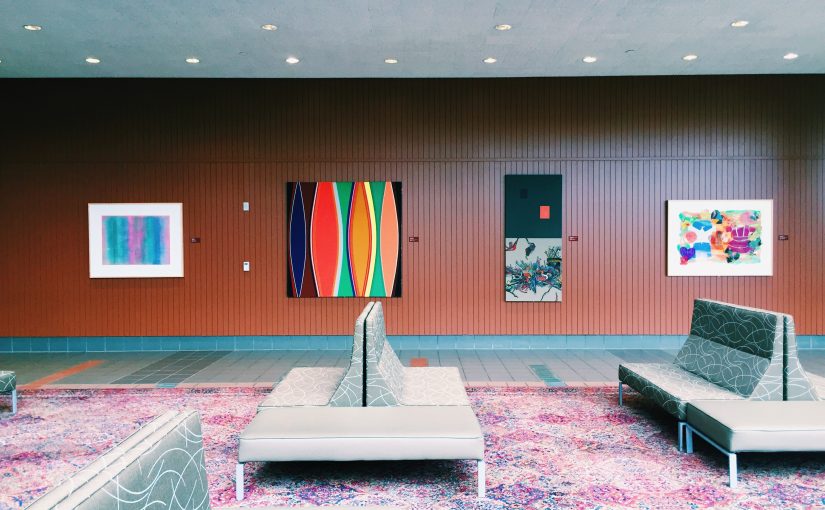
If you’ve stopped by the Weis Center recently, you’ve probably noticed something’s different. The Performing Arts Center’s lobby is boasting a new collection of art, thanks to its partnership with the Samek Art Museum.
“The interplay between music and visual art goes back to the pre-histories of both forms and spans cultures and continents,” Samek Director Richard Rinehart’s curatorial statement reads. “Language often becomes involved in the dance between the two art forms as they borrow terms from one another. For instance, the visual arts appropriated the musical terms composition, tone, and harmony to describe painting, while music lifted from visual art metaphors of line and texture.”
The program, called Art at the Weis Center, highlights the intersection of performing and visual arts, according to the Samek’s website, and will feature different exhibitions throughout the school year, which may relate to Weis Center events.
The partnership’s first exhibition, The Color of Sound, captures the connection between sight and sound beautifully. While each carefully curated piece expresses sound and music in a visual sense, Japanese-American artist Noriko Yamamoto’s Horizon is one of the exhibition’s most eye-catching pieces, and truly encapsulates the concept of The Color of Sound.
A common theme among the works featured in the exhibition is a visual portrayal of sound waves. Whether conveyed in curving, reverberating strokes as in Yamamoto’s piece, or in smaller, jagged lines, a sense of motion is present throughout the exhibition. Similarly, the bright colors featured in the exhibition emphasize that while the harmonious and rhythmic elements of music are certainly appealing, there is also beauty in cacophony.
If you want to see the works for themselves, stop by the Weis Center and be sure to follow Rinehart’s advice: “When you view these works, look for visual equivalents of tonality, rhythm, repetition, movement, composition, harmony, and dissonance. And when you enter the auditorium, listen for the acoustic equivalents of line, shape, and texture and you’ll be participating in a cultural interchange thousands of years in the making.”
~Madeline Diamond
Class of 2017